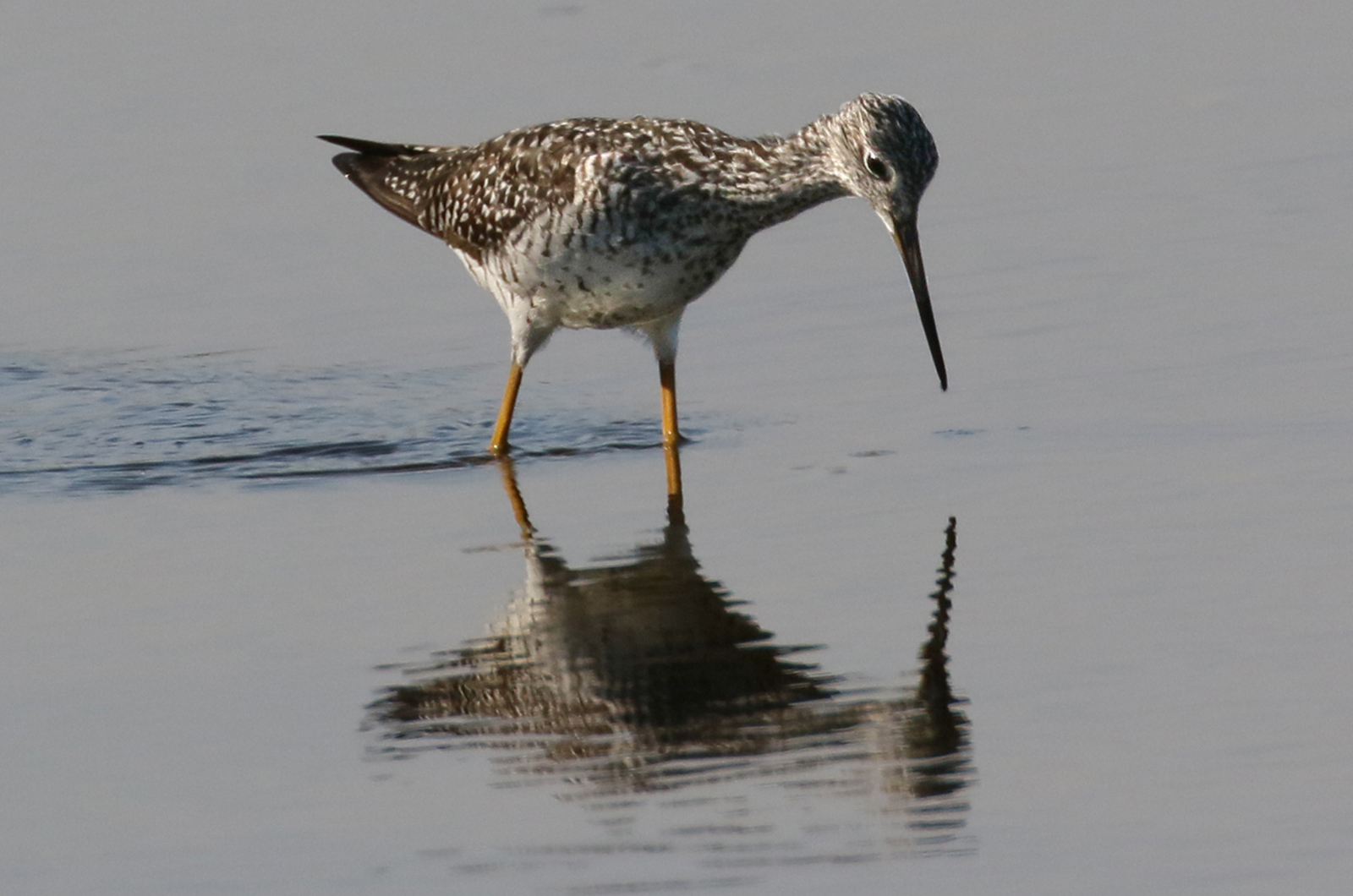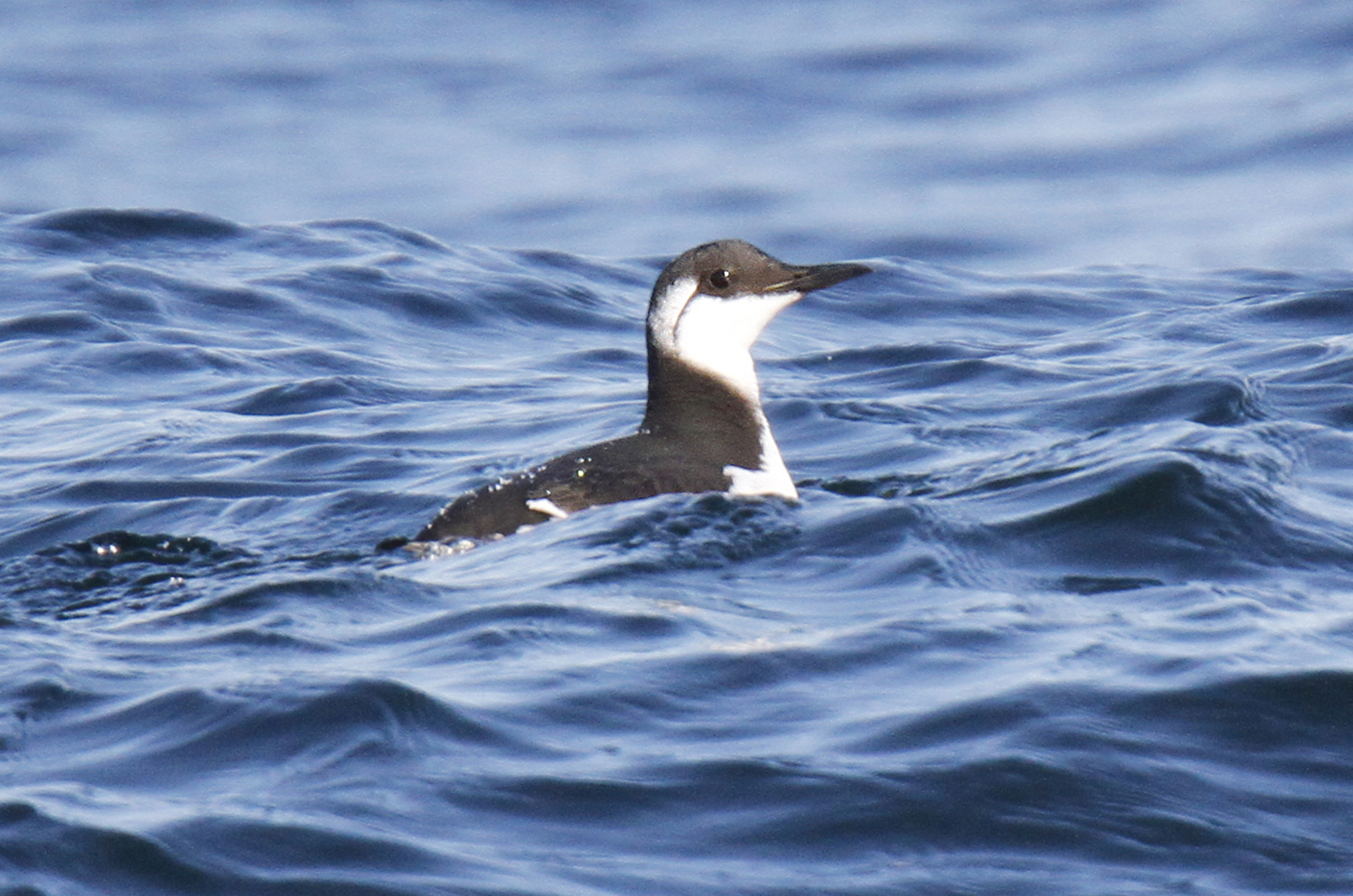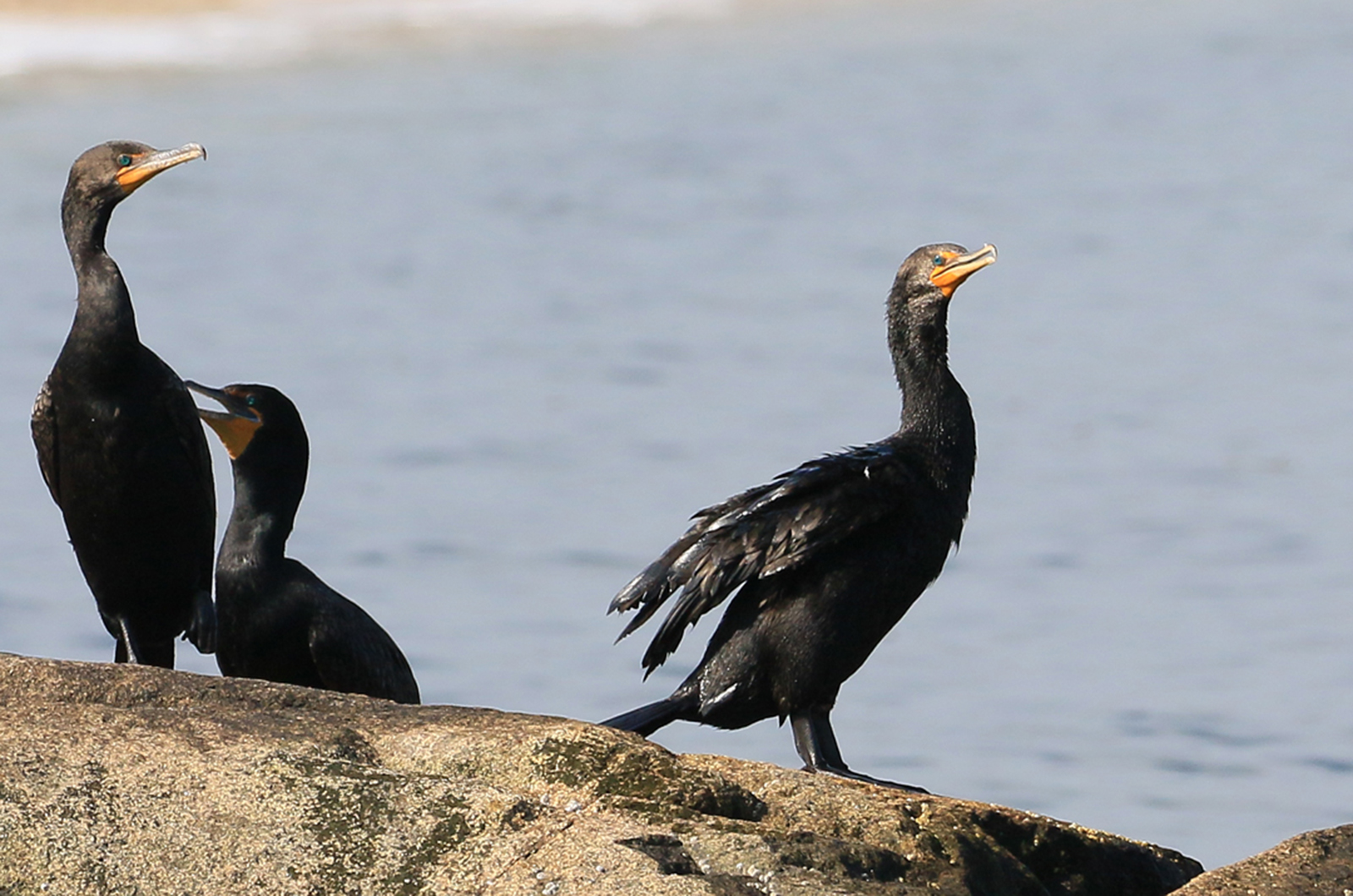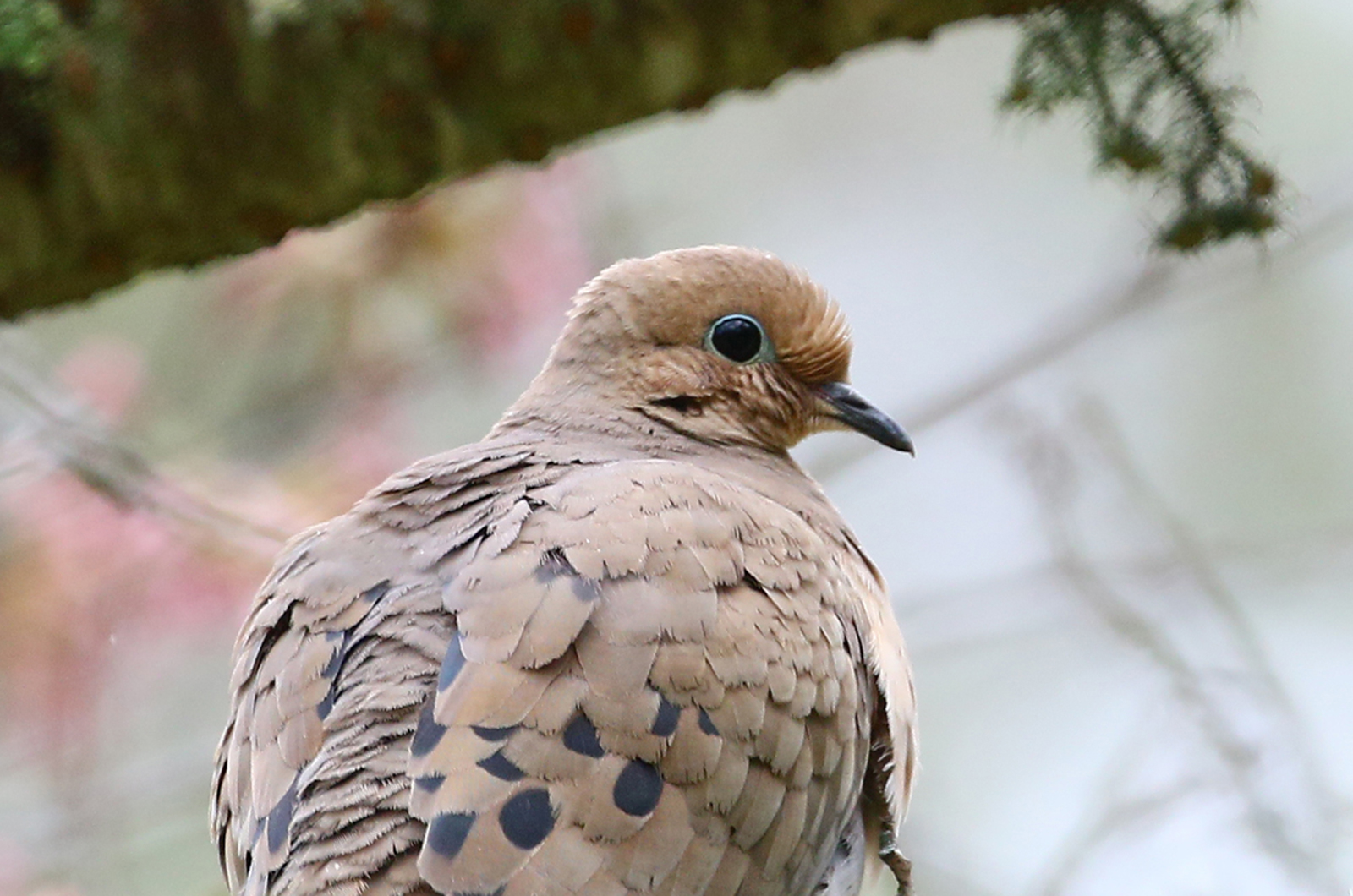The data from the 63rd Annual Martha’s Vineyard Christmas Bird Count, which was held on Jan. 1, has been crunched, analyzed and crunched again. Why does it take so long? There were 63 field participants divided into 13-21 field teams, as many teams split up for part of the day to better covert their assigned territory. Many people review the data, making sure that every bird is counted and properly identified; and the data is reviewed to make sure that birds are not counted twice, by adjacent teams. Coordinating all this is the job of compiler Luanne Johnson and it takes time.
So now we know that 121 species were found on Count Day, totaling 18,720 birds. Three additional species were seen in count week, which includes the three days before and after count day. Both of these numbers are slightly above the average for the previous 10 years.
The Aquinnah team spotted two common murres, an alcid never before seen on the Count and the 222nd species recorded on counts since 1960! This species is very similar to the more common thick-billed murre, and a photograph was necessary to confirm its identity as they were only two birds in a flock of other alcids flying by.
Another highlight was a black vulture; only the second sighting on Count Day, with the first sighting on the 2006 count. This species has been seen during the count week of three other counts.
Four species were near their record highs: double-crested cormorant, greater yellowlegs, mourning dove and common raven.
At the other extreme, 10 species were well below their average abundance for the previous 10 Bird Counts: black-capped chickadee, tufted titmouse, eastern bluebird, gray catbird, northern mockingbird, American tree sparrow, field sparrow, dark-eyed junco, northern cardinal and house finch. This scarcity is surprising since this is the first Count in recent years to have favorable weather for finding and counting songbirds!
Here is the complete list of species observed on the 63rd Annual Martha’s Vineyard Christmas Bird Count. CW indicates a species seen not on Count Day but within three days before or after the count.
Snow goose (white morph), 1; brant, 218; Canada goose, 2,413; mute swan, 81; wood duck, 10; gadwall, 9; American wigeon, 97; American black duck, 782; mallard, 600; black duck mallard, 1; northern pintail, 4; green-winged teal, 58; ring-necked duck, 30; greater scaup, 516; lesser scaup, 46; common eider, 483; harlequin duck, 18; surf scoter, 197; white-winged scoter, 331; black scoter, 132; scoter species, 1;
Long-tailed duck, 325; bufflehead, 1240; common goldeneye, 250; hooded merganser, 272; common merganser, 8; red-breasted merganser, 411; ruddy duck, 8; northern bobwhite CW; wild turkey, 284; red-throated loon, 58; common loon, 110; horned grebe, 26; northern gannet, 37; double-crested cormorant, 55; great cormorant, 105; great blue heron, 44; great egret, 1; black-crowned night heron, 35; black vulture, 1; turkey vulture, 52; northern harrier, 6; sharp-shinned hawk, 2; Cooper’s hawk, 11; bald eagle, 2; red-tailed hawk, 52;
Virginia rail, 3; American coot, 1; American oystercatcher, 1; black-bellied plover, 24; killdeer, 2; greater yellowlegs, 14; sanderling, 133; dunlin, 87; purple sandpiper, 22; Wilson’s snipe, 1; dovekie, 29; common murre, 2; razorbill, 319; black-legged kittiwake, 6; Bonaparte’s gull, 196; laughing gull, 1; ring-billed gull, 175; herring gull, 1,401; Iceland gull, 1; lesser black-backed gull, 4; glaucous gull, 1; great black-backed gull, 236;
Rock pigeon, 147; mourning dove, 292; barn owl 9, eastern screech-owl, 13; belted kingfisher, 20; red-bellied woodpecker, 83; yellow-bellied sapsucker, 1; downy woodpecker, 90; hairy woodpecker, 25; northern flicker, 48; merlin, 3; peregrine falcon, 2; eastern phoebe, 2; blue jay, 336; American crow, 655; fish crow, 74; common raven, 9; horned lark, 61; tree swallow, 1; black-capped chickadee, 727; tufted titmouse, 158; red-breasted nuthatch, 55; white-breasted nuthatch, 147; brown creeper, 7;
Winter wren, 1; Carolina wren, 177; golden-crowned kinglet, 53; ruby-crowned kinglet, 2; eastern bluebird, 44; hermit thrush, 4; American robin, 767; gray catbird, 6; brown thrasher, 2; northern mockingbird, 14; European starling, 1057; cedar waxwing, 11; snow bunting, 69; palm warbler, 1; pine warbler, 1; yellow-rumped warbler, 114; yellow-breasted chat, 1; American tree sparrow, 1; chipping sparrow, 8; field sparrow, 1; fox sparrow, 1; dark-eyed junco, 207; white-throated sparrow, 187; Savannah sparrow, 11; ‘Ipswich’ sparrow, 4; song sparrow, 223; swamp sparrow, 16; eastern towhee, 16; northern cardinal, 169; red-winged blackbird, 12; eastern meadowlark, 19; brown-headed cowbird, CW; house finch, 135; purple finch, CW; American goldfinch. 93; and house sparrow, 229.
Of course there have been birds seen this past week, too. Most notable of these is the first report in quite some time of a barred owl. Joel Graves emailed me to report that on Jan. 23 he heard one hooting just after dark. This is a good time to hear owls as the larger owls — barred, great horned and long-eared — are getting ready to nest; some of them may already be incubating eggs.
Anne Whiting comments that we have finally had some nice birding weather. On Jan. 25 she visited Quenames and Black Point Pond, where her highlights were three pintail, a flock of tree swallows, yellow-rumped warbler, eastern bluebirds, merlin and sharp-shinned hawk, northern harrier, red tailed hawk,and barn owl. On Jan. 21, Tara Whiting-Wells saw a flock of 20 tree swallows feeding on that days’ insect hatchings. Will these swallows stay through the winter or migrate further south?
And on Jan. 21 Patrick Phillips reports four red-winged blackbirds and a Baltimore oriole in his Edgartown yard.
Finally, I must ask a botanical question of my neighboring columnists on this page. I have some dusty miller in planters that are doing well. But I have noticed that they take on a pale greenish-gray coloration in the early morning but then change back to the more normal pure gray within a few hours. What is going on?
Please email your sightings to birds@mvgazette.com.
Robert Culbert is an ecological consultant with Nature Watch LLC living in Vineyard Haven.









Comments
Comment policy »